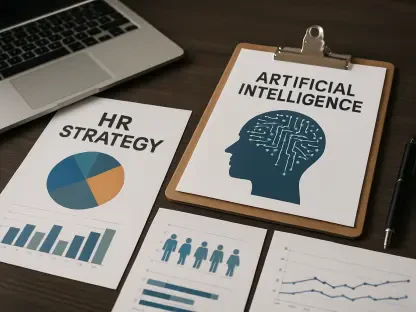In today’s diverse occupational environment, it’s increasingly important for companies to foster an inclusive culture that supports individuals with visible differences, such as scars, marks, or conditions that alter their appearance. Research conducted by Changing Faces, a prominent charity, has revealed that a significant portion of people with visible differences feel that their employers are inept at preventing discrimination. This revelation indicates a dire need for education and practical measures aimed at creating an inclusive and supportive work atmosphere.
Embedding Diversity in Recruitment and Hiring Practices
To cultivate an inclusive workplace, it is crucial to embed diversity into recruitment and hiring practices from the ground up. This involves not only recognizing the value that individuals with visible differences bring to the table but also ensuring that bias is minimized during the hiring process. Companies can achieve this by implementing structured interview protocols and diverse hiring panels to mitigate the impact of unconscious bias.
Unconscious bias training for recruiters and hiring managers is essential. By raising awareness about how assumptions and stereotypes can influence decisions, organizations can create more equitable opportunities for all candidates. Additionally, inclusive job advertisements and descriptions that emphasize the importance of diverse backgrounds and experiences can attract a broader range of applicants. Regular auditing of hiring practices can also help identify and rectify any discriminatory patterns, thus ensuring a fair and inclusive recruitment process.
Another key aspect is the active involvement of individuals with visible differences in diversity and inclusion initiatives. By incorporating their perspectives and experiences into policy development, businesses can better understand the unique challenges faced by these employees. This inclusive approach ensures that policies are not just theoretically sound but practically effective, ultimately leading to a more supportive and welcoming work environment.
Tackling Unconscious Bias and Encouraging Participation
Unconscious bias often represents one of the most pervasive barriers to inclusivity in the workplace. These biases, though subtle, can significantly affect hiring decisions, promotions, and overall work culture. To address this, organizations must invest in comprehensive unconscious bias training programs that educate employees at all levels about the nature and impact of these biases. Such training should be ongoing and integrated into the regular professional development agenda.
Encouraging the active participation of employees with visible differences in workplace activities and decision-making processes can also foster an inclusive culture. Creating employee resource groups (ERGs) dedicated to supporting these individuals provides a platform for their voices to be heard and their concerns addressed. These groups can serve as advocates within the organization, helping to shape policies and practices that promote equity and inclusion.
Moreover, companies can host workshops and events that celebrate diversity and educate the workforce about the experiences of individuals with visible differences. These initiatives not only raise awareness but also build empathy and understanding among employees. Recognizing and celebrating the achievements of employees with visible differences can further reinforce the message that diversity is valued and respected within the organization.
Regularly checking in with employees who have visible differences to ensure their well-being and satisfaction at work is also critical. Managers should be trained to have open and supportive conversations, creating an atmosphere where employees feel comfortable discussing their needs and experiences. Respecting their privacy and confidentiality is paramount, as it helps build trust and demonstrates a genuine commitment to their inclusion.
Legal and Systemic Challenges
The existing legal framework, specifically the Equality Act 2010, classifies severe disfigurement as a disability. However, the lack of a clear definition of ‘severity’ poses challenges for individuals seeking protection under the law. This ambiguity can make it difficult for claimants to prove their cases in employment tribunals, often resulting in inadequate protection against discrimination for those with visible differences.
The legal challenge is compounded by the fact that the physical severity of a disfigurement does not always correlate with its psychological impact. Social reactions and stigmatization can significantly affect individuals, regardless of the perceived severity of their condition. This underscores the need for a more nuanced understanding of disfigurement that goes beyond physical characteristics and considers the social and psychological dimensions of the issue.
To address these challenges, the current equality legislation must evolve to provide clearer definitions and broader protections. Removing the term ‘severe’ from the legal language and focusing on the behavior of the respondent rather than solely on the claimant’s features could offer a more inclusive and fair approach. Allowing individuals to describe their experiences in their own words would foster a deeper understanding of the impact of discrimination, leading to more effective and compassionate legal outcomes.
Creating a Culture of Respect and Understanding
Promoting a culture of respect and understanding within the workplace is essential for supporting individuals with visible differences. This starts with leadership setting the tone and modeling inclusive behavior. When leaders openly discuss and champion diversity and inclusion, it sends a powerful message to all employees about the organization’s values and commitments.
Implementing comprehensive diversity and inclusion policies that address the specific needs of employees with visible differences is also vital. These policies should be regularly reviewed and updated based on feedback from employees and evolving best practices. Providing ongoing training and education on diversity issues helps to embed a culture of respect and understanding across the organization.
Moreover, offering confidential support services, such as counseling and employee assistance programs, can provide individuals with the resources they need to navigate workplace challenges. These services should be easily accessible and well-publicized to ensure that employees are aware of the support available to them.
Creating opportunities for employees to share their stories and experiences can also play a significant role in fostering understanding and empathy. Storytelling initiatives, whether through internal communications, workshops, or events, allow employees to connect on a personal level and appreciate diverse perspectives. Celebrating diversity through various channels helps to normalize visible differences and reinforce the message that all employees are valued members of the team.
Moving Forward
In today’s diverse occupational environment, it’s more crucial than ever for companies to nurture an inclusive culture that supports individuals with visible differences, such as scars, marks, or conditions that change their appearance. Research by Changing Faces, a leading charity, has shown that a significant number of individuals with visible differences feel that their employers fail to prevent discrimination. This research highlights a critical necessity for education and actionable steps to foster an inclusive and supportive work atmosphere. An inclusive culture not only benefits those with visible differences but enriches the overall workplace environment. To combat discrimination, companies should implement comprehensive training programs, establish clear policies, and promote awareness about diversity and inclusion. By doing so, they can create a work setting where everyone feels valued and respected, ultimately leading to a more productive and harmonious workplace.









